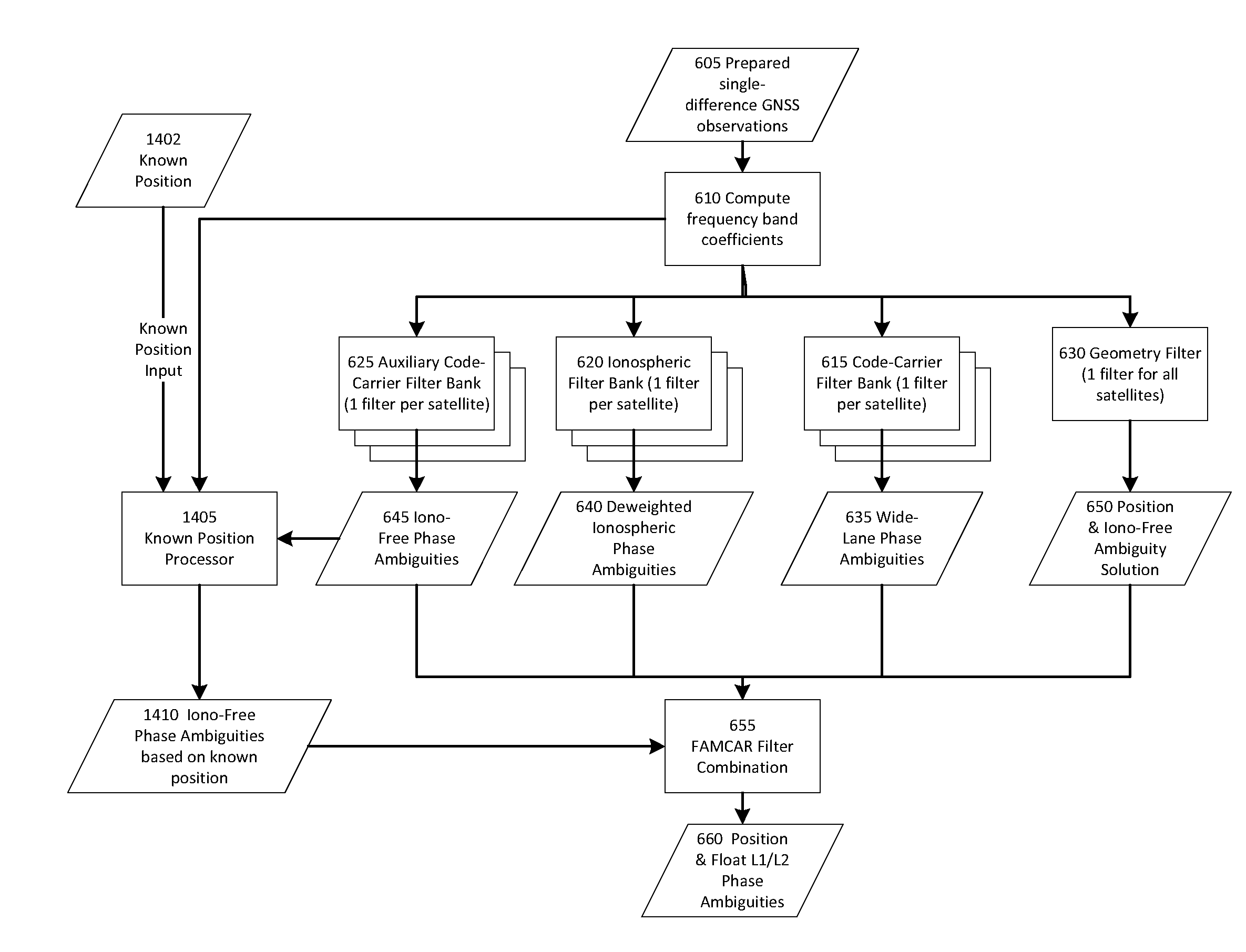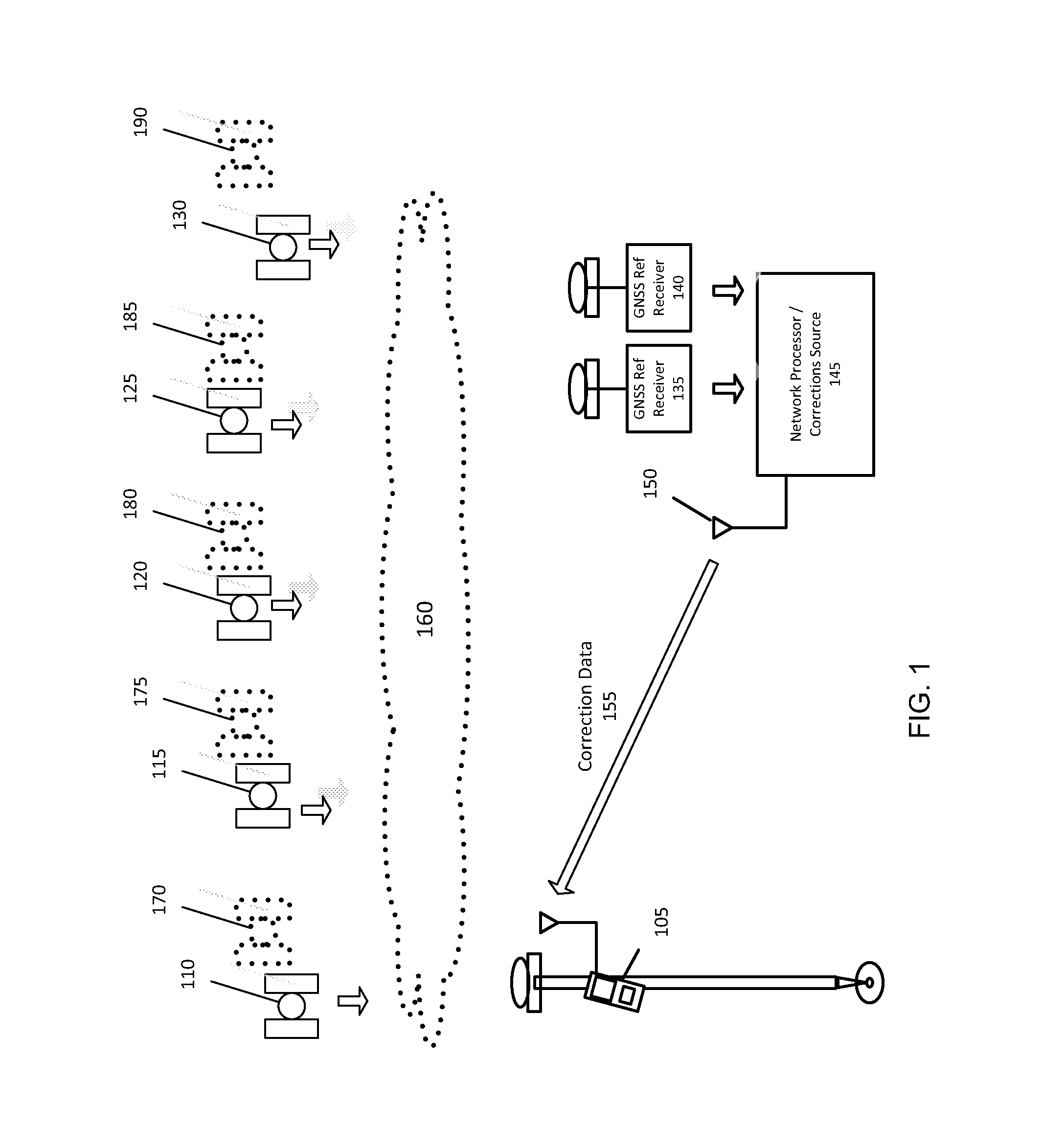GNSS Signal Processing with Known Position for Reconvergence
a signal processing and known position technology, applied in satellite radio beaconing, measurement devices, instruments, etc., can solve the problems of inability to accurately and the inability to predict the position of the auxiliary code-carrier filter
- Summary
- Abstract
- Description
- Claims
- Application Information
AI Technical Summary
Benefits of technology
Problems solved by technology
Method used
Image
Examples
Embodiment Construction
[0036]Global Virtual Reference Station (GVRS) Positioning Principles
[0037]Overview
[0038]FIG. 4 shows an embodiment of Global Virtual Reference Station (GVRS) rover processing with GNSS satellite corrections (taken from FIG. 38 of U.S. Provisional Application for Patent No. 61 / 277,184 filed 19 Sep. 2009 (TNL A-2585P)). Rover receiver 3805 receives GNSS signals from multiple GNSS satellites, of which three are shown at 3810, 3815, 3820. Receiver 3805 derives GNSS data 3825 from code observations and carrier-phase observations of the GNSS signals over multiple epochs.
[0039]Precise satellite data 3830 for the GNSS satellites are received, via a correction message broadcast by a communication satellite 3835 in this case, or by other means, such as wireless Internet. The correction messages are decoded by a message decoder 3832. A Synthesized Base Station (SBS) module 3835 receives the precise satellite data 3830 and also receives information which it can use as a virtual base location, s...
PUM
 Login to View More
Login to View More Abstract
Description
Claims
Application Information
 Login to View More
Login to View More - R&D
- Intellectual Property
- Life Sciences
- Materials
- Tech Scout
- Unparalleled Data Quality
- Higher Quality Content
- 60% Fewer Hallucinations
Browse by: Latest US Patents, China's latest patents, Technical Efficacy Thesaurus, Application Domain, Technology Topic, Popular Technical Reports.
© 2025 PatSnap. All rights reserved.Legal|Privacy policy|Modern Slavery Act Transparency Statement|Sitemap|About US| Contact US: help@patsnap.com



